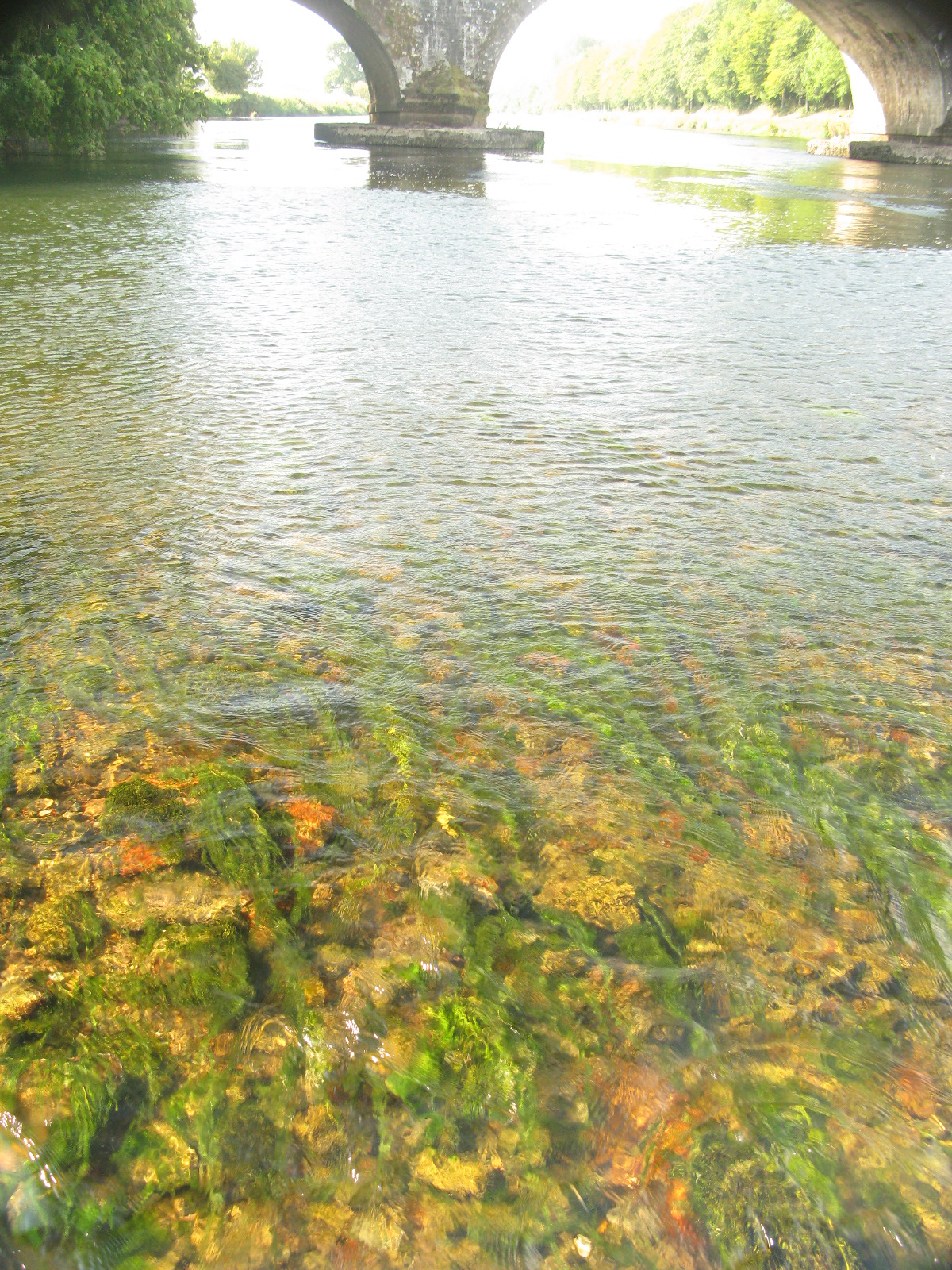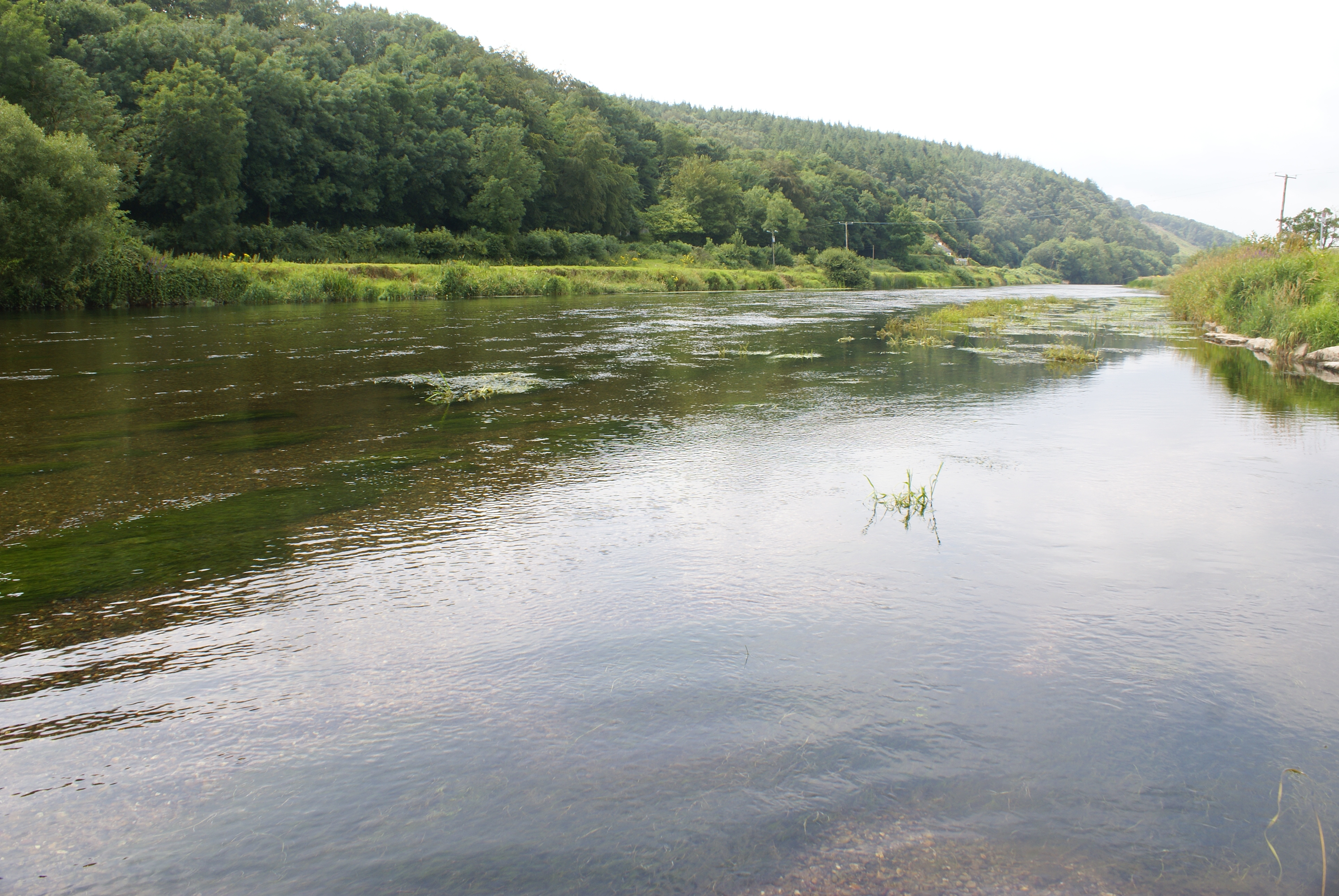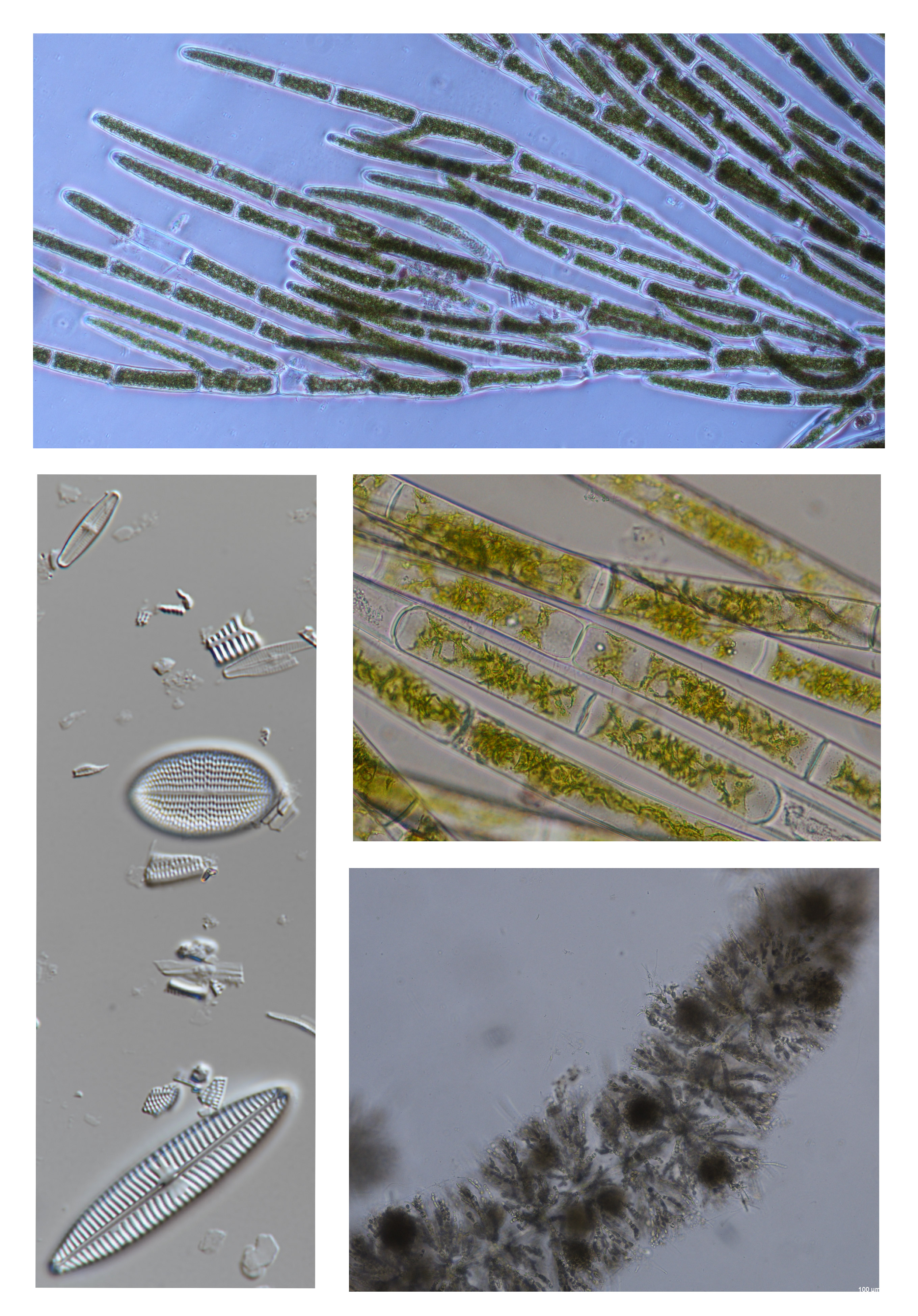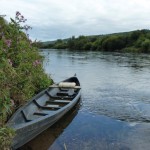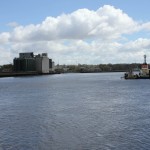Do we have the balance right between living and working…
What’s living in the Suir, how healthy are our rivers?
The various uses of rivers can involve conflicting interests and often such uses disrupt the ecology or health of the river. The fact that several of the more important beneficial uses of rivers such as drinking water abstraction, amenity uses like water sports, and waste water disposal are all dependent on biological processes is rarely appreciated.
If a river’s natural self-purification process, for example, is disrupted by pollution or over- abstraction, some or all beneficial uses may be impaired or lost. It is important, therefore, to keep ecological disruption to a minimum and to maintain the aquatic ecosystem in a healthy, functional condition. Progress towards this goal can be assessed by chemical or biological means or, preferably, by a combination of both. In general it could be said that whilst physico-chemical monitoring may measure the causes of pollution i.e. the pollutants, biological monitoring is the only means whereby the ecological effects of pollution can be measured.
What do we monitor?
The EPA is responsible for the implementation of the Water Framework Directive monitoring programme, assessing the results and reporting on the quality of our waters at a national and European level. Biological monitoring of Irish rivers and streams was first undertaken in the 1970’s and since then has continued on a three year survey cycle.
There are approximately 3,157 (2,831 biological and 1,463 chemical) monitoring sites on the national Water Framework Directive rivers monitoring programme.
A total of 215 river sites are surveyed in the Suir catchment alone including 138 biological and 139 chemistry sites.
Under the biological programme, the macroinvertebrate fauna (small animals without a backbone that can be seen with the naked eye) and the aquatic plants and algae residing in the river are examined, the species are identified, and their relative abundances are recorded. Using their known sensitivities and tolerances to pollution, biological indices can be applied to the observed data to summarise their ecological condition classifying the river site from satisfactory, that is High or Good condition, to unsatisfactory: Moderate, Poor or Bad conditions.
Fish surveys are carried out as part of the WFD monitoring programme including the Suir catchment. For further information please visit the Inland Fisheries Ireland website http://wfdfish.ie/.
The Q value system
The aquatic macroinvertebrate fauna is the main biological group monitored and assessed by the EPA to determine the condition of Irish rivers. The fish, aquatic plant and algal communities are examined and assessed in more detail at a limited number of surveillance sites across the country. Macroinvertebrates play an important role in river ecosystems, as they feed on algae and microorganisms, break down organic matter, recycle nutrients, and are prey for fish, birds, mammals and other macroinvertebrates. The aquatic macroinvertebrates are seen as important biological indicators. Macroinvertebrates are relatively sedentary in nature, different species have life cycles spanning from one to three years. The macroinvertebrate community therefore while residing in the river bed substrata will demonstrate the effects of changing water quality conditions over time. Depending on the water chemistry composition, the river flow and available habitats, the aquatic macroinvertebrate fauna is usually represented by the larval forms and in some cases adult forms of various insect groups such as mayflies, stoneflies and caddisflies, damselflies, dragonflies, true flies, beetles, true bugs, and other groups such as snails, mussels, worms, leeches and crustacean shrimp and crayfish. Important protected macroinvertebrate species such as Austropotamobius pallipes (Lereboullet), the white clawed crayfish and to a lesser extent Margaritifera margaritifera L., the freshwater pearl mussel are known to occur in rivers across the Suir catchment.
The EPA Q-Value System is based on the well-established sensitivities, abundance and diversity of macroinvertebrates and their relation to water quality. The Q Value system has been used to assess the quality of Irish rivers since the 1970’s. It has a nine point scale ranging from Q5 indicating high quality to Q1 bad quality. The scheme mainly reflects the effects of organic pollution i.e. deoxygenation and eutrophication i.e. nutrient enrichment, but can also reflect the effects of toxic chemical pollution e.g. pesticides, and general habitat degradation. Biological macroinvertebrate surveys are usually undertaken in the most sensitive time of the year, summer to early autumn period, when flows are likely to be relatively low, water temperatures are higher and any stresses on aquatic ecosystems are expected to be at a maximum. Biological material for examination is obtained by kick-sampling, a method used to disturb the river bed substrate and dislodge the resident macroinvertebrates living in the shallower, faster-flowing areas (riffles) into a standard pond net. The sample is then transferred to a white tray and the assessment of water quality is completed on the river bank.
What is ecological monitoring telling us?
In 2014, 138 macroinvertebrate Q value surveys were carried out across the Suir catchment, the macroinvertebrate Q value results indicated that 88 of the 138 sites or 71% of the river channel length surveyed was at high or good (Q4 or greater) ecological condition while 50 sites indicated unsatisfactory ecological condition (less than Q4). This unfortunately represents a decline in quality on the 2010-2012 survey period when approximately 78% of the river channel length surveyed was considered to be at satisfactory ecological condition
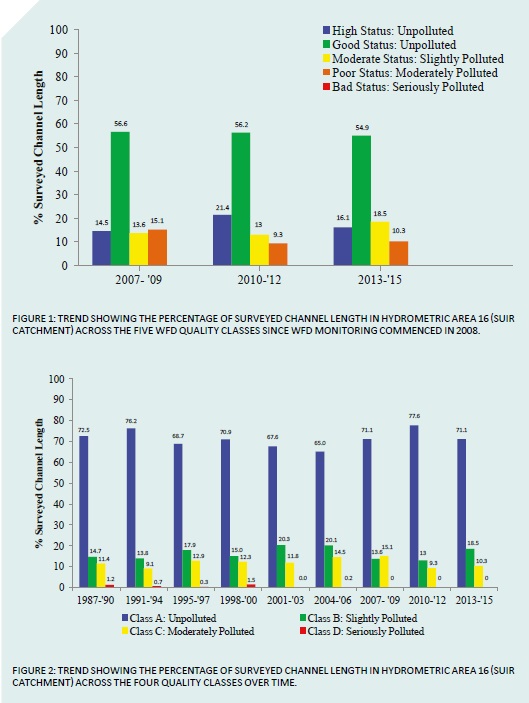
Once the macroinvertebrate Q value survey is completed, the results are provided by the EPA as online maps and published in Interim Reports on River Quality http://www.epa.ie/QValue/webusers/.
These results are then used in combination with other available information, for example chemical monitoring results and fish monitoring results, to assess the WFD ecological status for each of the country’s monitored river water bodies. The Q value survey results are the main source of information employed to highlight where an ecological impact from pollution or activities in the catchment is occurring on a river system.
The results inform catchment managers of where the pressure is impacting, and where programmes of measures will need to be targeted in order for river quality to improve. The monitoring programme results also provide important updates to demonstrate when the implemented measures are working.


